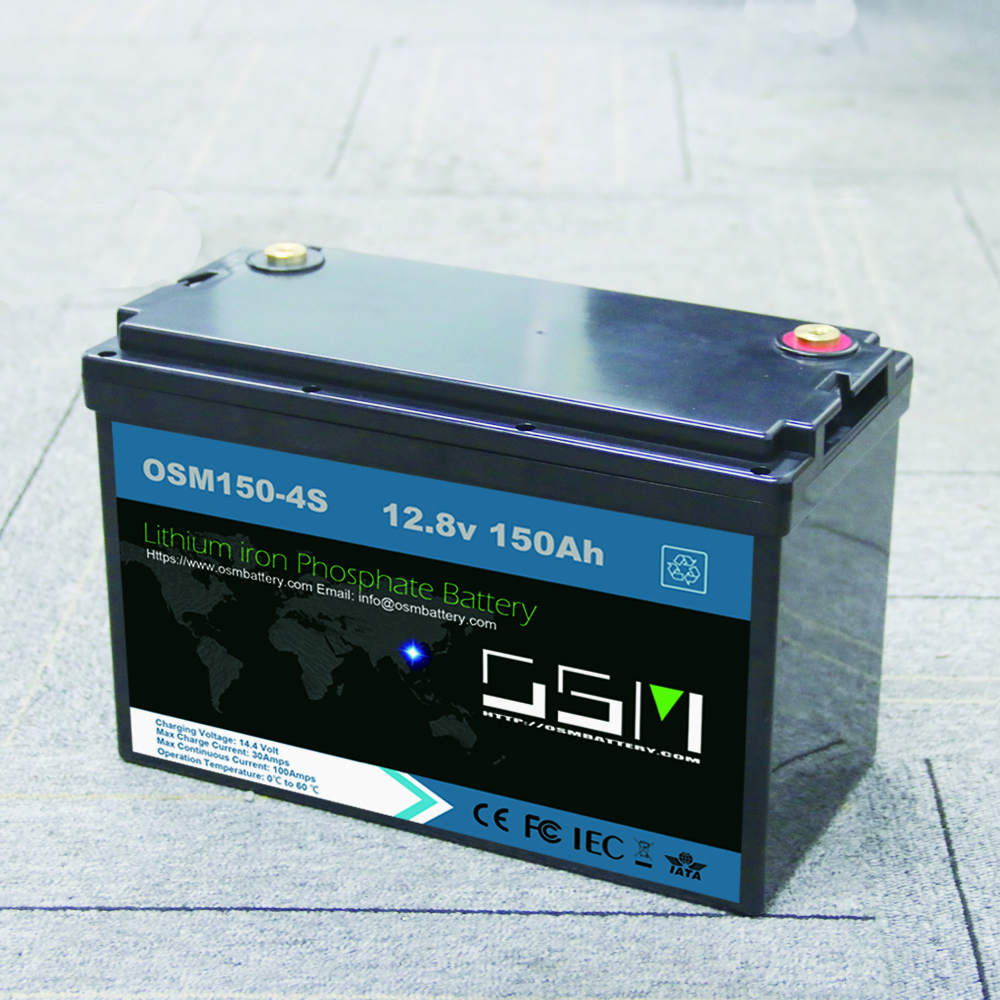Maximizing the efficiency of your off-grid solar power system requires careful attention to battery balancing.
Improperly balanced batteries can lead to premature failure, reduced performance, and diminished lifespan.
However, by using effective battery balancing techniques, you can ensure that each battery in your system is working at its optimal level, resulting in a more reliable and efficient power supply for your home or business.
We’ll explore the importance of battery balancing and provide actionable tips for achieving maximum efficiency from your off-grid solar power system.
Monitoring and Measurement
It is important to monitor the state of charge and voltage of each battery individually, as well as the system’s overall state, to determine when balancing is needed.
This is because the battery cells in a lithium-ion battery system are prone to imbalance, which can lead to a range of issues such as reduced capacity, decreased lifespan, and even catastrophic failure.
By monitoring the state of charge and voltage of each battery cell, you can identify when balancing is needed to maintain optimal performance and prevent such issues from arising.
This involves checking the cell voltages and state of charge regularly, and balancing the cells as needed to maintain a consistent state of charge and voltage across the system.
Monitoring the overall state of the system, such as the temperature and charge cycle count, can also provide valuable insights into the system’s health and help you determine when balancing is necessary.
By staying proactive and monitoring the state of your lithium-ion battery system, you can help ensure that it operates at its best and lasts for as long as possible.
Battery Balancing Techniques
Various methods can be used to balance batteries in an off-grid system, including passive balancing techniques and active balancing techniques. Passive balancing involves allowing each battery to self-discharge at its own rate, while active balancing involves actively moving charge between batteries.
When it comes to balancing batteries in an off-grid system, there are two main approaches: passive balancing and active balancing.
Passive balancing techniques involve allowing each battery to self-discharge at its own rate, without any active intervention.
This approach is often used in simpler off-grid systems where the battery bank is not too large or complex.
However, passive balancing may not be effective in systems with large battery banks or where there are significant differences in battery capacity or age.
Active balancing techniques, on the other hand, involve actively moving charge between batteries to maintain a consistent state of charge.
This approach is more effective in systems with large battery banks or where there are significant differences in battery capacity or age.
Active balancing can be achieved through various methods, such as using a battery management system (BMS) to monitor and control the state of charge of each battery, or by using a DC-DC converter to move charge between batteries.
There are several active balancing techniques that can be used in off-grid systems, including
Independent battery balancing: This involves using a BMS to monitor and control the state of charge of each battery individually.
The BMS can move charge between batteries to maintain a consistent state of charge.
Series battery balancing: This involves connecting the batteries in series and using a BMS to monitor and control the state of charge of the entire battery string.
Parallel battery balancing: This involves connecting the batteries in parallel and using a BMS to monitor and control the state of charge of each battery.
Hybrid battery balancing: This involves connecting the batteries in both series and parallel configurations and using a BMS to monitor and control the state of charge of each battery.
The choice of balancing technique will depend on the specific requirements of the off-grid system and the capabilities of the BMS.
By using active balancing techniques, off-grid systems can ensure that all batteries are fully charged and that the system is operating at maximum efficiency.
Single-Battery Systems
When dealing with single-battery systems, it is important to size the battery properly to meet the load requirements and ensure efficient operation. A properly-sized battery will help prevent deep discharging, which can negatively impact battery life.
When working with single-battery systems, proper battery sizing is important to meet load requirements and ensure efficient operation.
A well-chosen battery size will prevent deep discharging, which can have a detrimental effect on battery life.
Deep discharging occurs when the battery is drained to a level that is below its recommended minimum capacity, causing damage to the battery cells and reducing its overall lifespan.
To avoid this, it is important to select a battery that is capable of providing enough power to meet the system’s load requirements, without ever dropping below the recommended minimum voltage.
This will not only prolong the battery’s life but also prevent the need for premature replacements.
To determine the appropriate battery size, the system’s load requirements must be carefully calculated, taking into account the power consumption of all the components and any energy-saving features that may be included.
The battery’s discharge rate and its recommended depth of discharge should be considered to ensure optimal performance and longevity.
By properly sizing the battery, the system will be able to operate efficiently, provide reliable power, and minimize the need for maintenance or replacement.
Series-Battery Systems
Series-battery systems require a careful balance of battery sizes and charges to ensure efficient operation. A general rule of thumb is to match the voltage of each battery to the load requirement.
When designing series-battery systems, careful consideration must be given to the selection and balancing of battery sizes and charges to ensure efficient operation.
The key to a successful series-battery system is matching the voltage of each battery to the load requirement.
This ensures that the total voltage of the system is sufficient to meet the load’s demands, while also minimizing energy loss and maximizing the life of the batteries.
To achieve this balance, it is essential to consider the specifications of each battery, such as its voltage, capacity, and discharge rate, as well as the load requirements, such as the power and voltage needed.
By carefully selecting and balancing the battery sizes and charges, a series-battery system can provide a reliable and efficient power source for a variety of applications, from renewable energy systems to electric vehicles.
Parallel-Battery Systems
Parallel-battery systems require careful attention to the state of charge of each battery to prevent overcharging and ensure efficient operation. It is also important to ensure proper communication between batteries to avoid over-discharging.
Parallel-battery systems necessitate meticulous monitoring of the state of charge of each battery to avert overcharging and guarantee optimal performance.
This involves regularly measuring the voltage and current of each battery and comparing them to established limits to detect any deviations or irregularities.
Overcharging can cause damage to the battery plates, leading to reduced capacity and lifespan, while over-discharging can cause battery imbalance, reduced system efficiency, and even premature failure.
Therefore, it is important to establish a communication protocol between batteries to coordinate their charging and discharging processes, ensuring that each battery is operated within its optimal voltage and current ranges.
This can be achieved through the use of advanced battery management systems (BMS) that can monitor and balance the state of charge of each battery in real-time, preventing overcharging and over-discharging and ensuring the overall efficiency and longevity of the system.
Charging and Discharging
The charging and discharging rates of the batteries in an off-grid system should be monitored regularly to prevent imbalance. Balancing can be done through active or passive techniques.
Regular monitoring of the charging and discharging rates of the batteries in an off-grid system is important to prevent imbalance, which can lead to reduced system performance, shorter battery lifespan, and even complete system failure.
When the system is not balanced, one or more batteries may be overcharged or undercharged, causing a variety of problems.
Active techniques such as battery balancing circuits or smart charging systems can be used to maintain a balanced system by detecting and adjusting the charging and discharging rates of each battery in real-time.
These active techniques can be more effective in balancing the system, but they are also more expensive and may require additional hardware and software.
Passive techniques such as using a large enough equalization resistor or a voltage regulator to prevent overcharging can also be used, but these methods are less effective and may require more frequent monitoring.
Overall, monitoring the charging and discharging rates of the batteries in an off-grid system and using active or passive techniques to balance the system is essential to ensure optimal system performance, prolonged battery lifespan, and prevent costly repairs or replacements.
Self-Sustaining Systems
Self-sustaining off-grid systems can use battery balancing to ensure efficient operation and prolong battery life. In addition to passive balancing techniques, active balancing can be employed to maintain battery health and extend the life of the system.
Off-grid renewable energy systems can reap the benefits of battery balancing techniques to ensure efficient operation and prolong battery life.
Passive balancing techniques such as battery isolation and passive balancing devices can be effective, but active balancing offers even more advantages.
Active balancing involves continuously monitoring and adjusting the battery bank’s state of charge (SOC) and state of health (SOH) to maintain optimal balance and prevent under/overcharging.
By actively balancing the battery bank, the system can extend the life of the batteries and ensure consistent performance.
Furthermore, active balancing can be combined with passive balancing techniques for even better results.
When selecting a battery management system (BMS), it’s important to consider the advantages of active balancing and choose a system that offers this feature.
With an active balancing BMS, off-grid renewable energy systems can operate efficiently and sustainably while minimizing maintenance and extending the life of the batteries.
Regular Maintenance
Regular maintenance of the off-grid system, including cleaning and inspection of the batteries and charging and discharging systems, is important for efficient operation and prolong battery life.
Regular maintenance of your off-grid system is important for efficient operation and prolonging the lifespan of your batteries.
To ensure optimal performance and longevity, it’s essential to clean and inspect your batteries regularly.
Dirt, debris, and corrosion can build up on the battery plates and affect the charge and discharge cycles.
Inspect the battery terminals and cables for signs of wear, corrosion, or damage, and clean or replace them as needed.
Check the charging and discharging systems to ensure they are functioning properly and not overheating or overcharging the batteries.
Proper maintenance can help prevent premature battery degradation and extend the life of your off-grid system.
So, make it a habit to regularly inspect and maintain your system to keep it running smoothly and efficiently.
Want More? Dive Deeper Here!
Hey there! If you’re the type who loves going down the rabbit hole of information (like we do), you’re in the right spot. We’ve pulled together some cool reads and resources that dive a bit deeper into the stuff we chat about on our site. Whether you’re just killing time or super into the topic, these picks might just be what you’re looking for. Happy reading!






